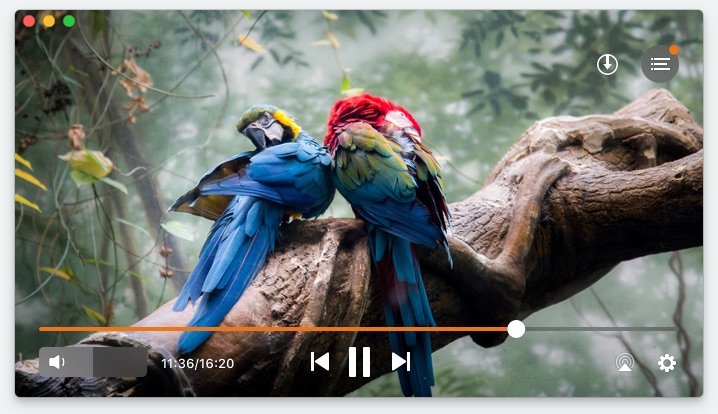
- #How does quicktime for mac work mac os
- #How does quicktime for mac work movie
- #How does quicktime for mac work install
- #How does quicktime for mac work software
#How does quicktime for mac work movie
This example puts the movie into the frame and immediately starts playing it if a control bar (aka a "scrubber") were desired, you would create a MovieController from the Movie and then create a component from the controller, rather than from the movie. The only calls to QTJ are the calls to OpenMovieFile.asRead() and omFile(), which create a QuickTime movie from the specified file, and the calls to create an AWT component from the QTFactory. Most of the code in this example involves itself with setting up the GUI. Import java.io.File import java.awt.* import quicktime.* import import import quicktime.io.* public class TrivialQTJPlayer extends Frame The following example shows an AWT file-selection dialog and then tries to import and play the selected media file. Since QuickTime itself can be extended, QTJ can pick up support for formats such as DivX and Ogg Vorbis through the use of third-party QuickTime components. QTJ offers access to most of the native QuickTime library, includingĪs a wrapper around QuickTime, QTJ also inherits support for a vast collection of media formats and codecs, including MPEG-1, MPEG-4, H.264, AAC, Sorenson Video, Flash, 3GPP, WAV, AIFF, and more.
#How does quicktime for mac work mac os
For this reason, it can only run on systems that have the QuickTime libraries installed, namely the classic Mac OS (which is no longer supported), Mac OS X, and Windows.


It is important to remember that QTJ is not a Java implementation of QuickTime, it is a Java wrapper around native QuickTime calls. However, as Apple owns the "QuickTime" trademark, there is no realistic chance of a namespace collision, the prevention of which is the purpose of the package naming convention. The Cocoa-based QTKit is a similar attempt to put an object-oriented layer atop the procedural QuickTime library, using Objective-C.Īpple's use of the top-level package name quicktime violates the Java Language's Specification convention that packages use a reverse-domain-name scheme, such as. The result is more like a genuine object-oriented API than other C-to-Java adaptations (such as JOGL, which dumps the OpenGL header files into classes with thousands of static methods). For example, the Movie struct is the basis of the class, with functions like NewMovieFromFile and GetMovieTrackCount becoming the instance methods fromFile() and getTrackCount() respectively. It does this by associating common structs and the functions that work with them into classes. QTJ lays an object-oriented API on top of the native C-based QuickTime library. The new version also neglected to provide a component to show a visual preview of the input from a capture device, such as a webcam or camcorder.

This 6.1 version of QTJ also radically changed the API, so that instead of having developers create GUI components and associate Movies or other renderable objects with them, the developers now needed to start with the Movie and request a suitable component from a factory. Later that year, Apple released a new version of QTJ that dealt with the incompatibilities, by offering a compatible but scaled-down version of the GUI classes. QTJ applications could still run under Java 1.3.1, but apps that did not specify the version of Java they required, or that needed 1.4 features, were rendered unusable. The underlying problem was Apple's move from Carbon to Cocoa for their AWT implementation, and the removal of a Java-to-native library called "JDirect" that QTJ relied on. In 2003, Apple issued a Java 1.4.1 implementation that broke any QTJ applications that tried to run under 1.4.1 on Mac OS X.
#How does quicktime for mac work install
Later versions were installed by default with Mac OS and Mac OS X, and were an optional part of the QuickTime install for Windows. Ported to the Mac OS, it was developed under the code-name "Biscotti", and first released as a public beta in 1999.
#How does quicktime for mac work software
Linzmayer, in Apple Confidential 2.0, traces QuickTime for Java's genesis back to Kaleida Labs, a spin-off company created by Apple Computer and IBM, noting that it and some Unicode text classes were the only Mac software salvaged from the four-year, $150 million disaster.


 0 kommentar(er)
0 kommentar(er)
